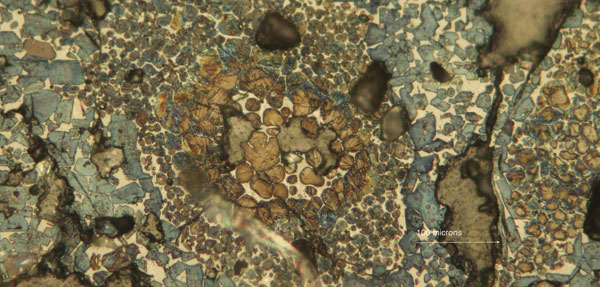Microscopy & practice
In this article Arthur Harrisson connects microscopy observations with the practical issues on the cement plant and in the market. He also identifies the benefits which are obtained by regular microscopic examination of cement clinker.

Figure 1: effect of coarse silica in kiln feed. Oversized belite crystals are very difficult to combine with free lime
In a previous article concerning microscopy (ICR July 2010) as a demonstration of the complexity of clinker mineralogy I took the extreme position of examining a single image from a polished section of clinker and describing the variety of features from a very small area of the specimen. In practice, of course, it would not be wise to make changes to raw materials, feed preparation or kiln operation on the basis of a single field of view. It is necessary to examine a larger number of nodules and to examine the whole surface presented under the microscope. From this, a suite of mineralogical characteristics can be built up and the implications for the whole process can be analysed.
In this case, instead of starting with the observed characteristics, which perhaps puts too much emphasis on the technique and less on its usefulness, I will look at the general issues involved in clinker making and see how we may be able to improve them by using the microscope.

